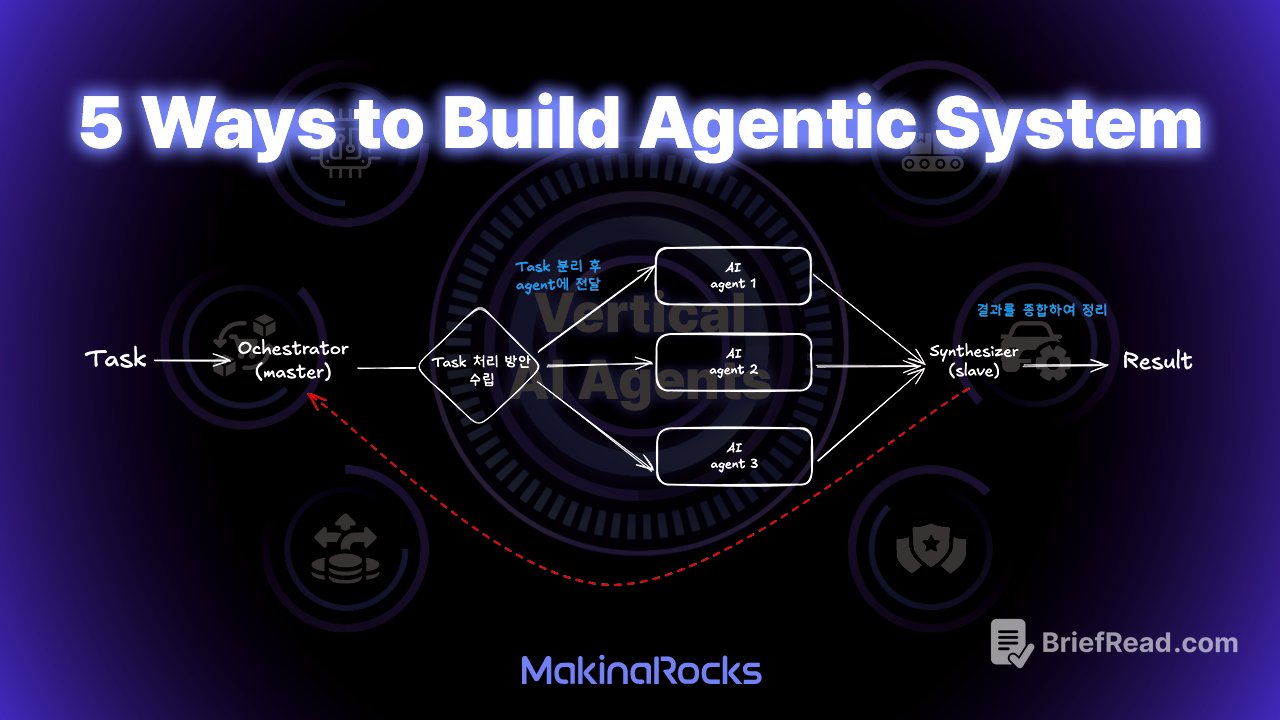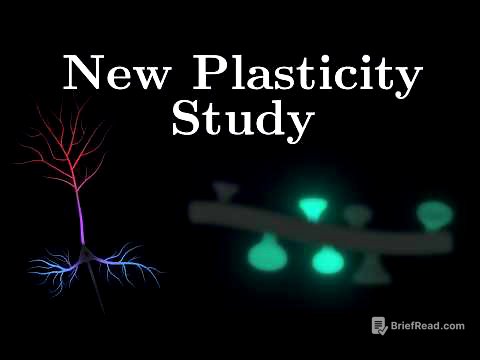TLDR;
This article explores five methodologies for implementing Agentic Systems, which aim to bridge the gap between the promise of AI and actual user satisfaction. Agentic Systems automate tasks by using multiple AI agents that collaborate to understand user intent and provide specific solutions. The methodologies include Chaining, Routing, Parallelization, Orchestrator-workers, and Evaluator-optimizer. The article emphasizes that the best approach depends on the specific problem and requires a deep understanding of both AI and the company's workflow.
- Agentic Systems use multiple AI agents to automate tasks and provide specific solutions.
- Five methodologies for implementing Agentic Systems: Chaining, Routing, Parallelization, Orchestrator-workers, and Evaluator-optimizer.
- The best approach depends on the specific problem and requires a deep understanding of AI and the company's workflow.
Introduction to AI Agents and Agentic Systems
AI agents have emerged to address the gap between the touted capabilities of AI technology and the lower satisfaction experienced by actual users. Generative AI, exemplified by ChatGPT, has become indispensable in daily life and work, significantly boosting efficiency. However, when dealing with specific and specialized problems, users often find that they don't receive satisfactory answers immediately. Users typically interact with AI in two ways: either by continuously asking detailed questions until the desired response is obtained, or by repeatedly asking the same question in hopes of getting a better answer. AI agents automate these processes through Agentic Systems, where multiple AI agents collaborate. These systems use Large Language Models (LLMs) to accurately understand user intentions, gather necessary information, and provide concrete solutions. The key to an effective Agentic System is ensuring that multiple AI agents operate independently while working together towards a common goal, similar to how skilled experts systematically solve problems.
Chaining Methodology
Chaining involves breaking down tasks into smaller, sequential steps, with each step building on the results of the previous one. This method is similar to asking detailed questions iteratively but is more structured and efficient. In manufacturing, a Manufacturing-Specific Chaining system can systematically separate and handle complex tasks, such as quality control. For example, quality control can be divided into defining specifications, establishing inspection methods, detecting anomalies, and suggesting corrective actions. This structured approach prevents errors and allows for more accurate analysis, improving the overall efficiency of the quality management system.
Routing Methodology
Routing involves assigning tasks to the most specialized AI agent, similar to how companies allocate work to experts in different fields. Unlike general LLMs that provide generic answers, specialized AI agents possess in-depth knowledge and experience in specific domains. These agents are pre-trained with domain-specific data and have optimized guides and templates for handling relevant tasks. In a semiconductor production line, a Vertical AI Agent Routing system can be implemented with a central Task Manager that selects specialized agents based on criteria like process stage, problem type, and urgency. For example, if a significant deviation in etching depth occurs, the Task Manager routes the problem to an etching process specialist agent, which then analyzes the plasma state, optimizes process parameters, and develops and executes improvement plans. This system ensures that the most suitable agent handles the problem independently, although it does not involve collaboration with other agents for integrated solutions.
Parallelization Methodology
Parallelization maximizes system efficiency by processing multiple tasks simultaneously. This is achieved through two main approaches: Sectioning and Voting. Sectioning divides a large task into independent sub-tasks that multiple AI agents handle concurrently. For instance, in a large-scale code review, different AI agents can simultaneously check for security vulnerabilities, optimize performance, and evaluate code style and readability. Voting involves multiple AI agents independently performing the same task and then aggregating the results to determine the best answer. For example, in content moderation, multiple AI agents assess the appropriateness of content, and their judgments are combined to make a final decision. In an automotive transmission production line, Sectioning can be used where a quality analysis agent detects a gear dimension deviation and tasks are automatically assigned to agents specializing in detailed quality data analysis, process parameter optimization, and equipment condition management. This leads to reduced defect rates, increased preventive maintenance, and improved productivity, as well as a stronger integrated quality management system and enhanced equipment reliability.
Orchestrator-workers Methodology
Orchestrator-workers involves a central Orchestrator that manages tasks and dynamically assigns them to individual Worker AIs, ensuring efficient task distribution. The Orchestrator analyzes the complexity of the overall task, defines necessary sub-tasks, determines task priorities, monitors the progress of Worker AIs, and integrates and verifies the final results. In a smart factory setting, the Orchestrator manages the entire production flow, analyzing tasks required at each stage and determining their priorities. It then assigns specific tasks to Worker AIs, such as assembly, quality inspection, and packaging. The Orchestrator monitors their progress in real-time and adjusts priorities or assigns additional workers as needed to resolve any delays or issues. This dynamic management allows for flexible task reconfiguration based on real-time conditions, unlike the pre-set task distribution in Parallelization.
Evaluator-optimizer Methodology
Evaluator-optimizer involves an iterative optimization process where an Evaluator measures performance, and an Optimizer uses that information to improve the system. The Optimizer AI generates results, and the Evaluator AI assesses these results, providing feedback for improvement. This method is suitable for processes with complex variables or those requiring repetitive adjustments. For example, in quality management automation, the Evaluator inspects product quality and assesses defect rates, while the Optimizer adjusts variables to improve quality standards. This iterative process helps find the best production conditions to maintain optimal quality. It is also useful for improving the efficiency of manufacturing equipment, where the Evaluator assesses equipment uptime, failure rates, and energy consumption, and the Optimizer optimizes operating conditions, inspection cycles, and maintenance schedules. While this system offers quality assurance and continuous improvement, it requires clear evaluation criteria, sufficient time for iterative improvements, and ensuring the expertise and objectivity of the Evaluator.
Conclusion
The key feature of AI agents is their ability to handle complex tasks autonomously and automatically. Agentic Systems are particularly useful when task steps are unpredictable or when dealing with complex problems that cannot be solved with simple rules. They are also effective in tasks requiring multiple decisions or in environments where automation is scalable. Selecting the most effective methodology requires a deep understanding of domain-specific AI and the company's workflow. Companies without in-house AI experts can collaborate with external AI specialists to create customized AI agent solutions tailored to their specific goals.



![Low Deep T - Casablanca [Official Video HD]](https://wm-img.halpindev.com/p-briefread_c-10_b-10/urlb/aHR0cDovL2ltZy55b3V0dWJlLmNvbS92aS9iZWJaWjdRMndDZy9ocWRlZmF1bHQuanBn.jpg)





